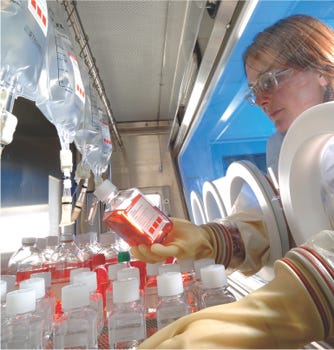Quality Key to Risk MitigationQuality Key to Risk Mitigation
July 1, 2008

Whether applied to business security, product specification, financial exposure or personnel safety, quality is a key element underpinning any biopharmaceutical risk mitigation strategy. A quality system should not be inherently dependent upon personnel, nor should it rely solely on people to ensure the quality of the products manufactured. Irrespective of human resources, the system itself should provide consistency, addressing risk from design inception through to product delivery, ensuring that robust processes are in place that minimize risk to the product and ultimately the end user.
Industry Demands Increased Product Quality
Although not all products supplied to the biopharmaceutical industry are regulated or licensed by a governmental agency, the sector rightly expects an equivalent level of controls, systems and compliance — increasingly to CGMP standards. As a leading global supplier of cell culture media, sera and buffers, SAFC Biosciences understands this requirement, providing specified materials of a consistent quality and minimizing the potential for variability in our customers’ batch-to-batch manufacturing.
A robust internal quality program supports third-party customer audits, ISO certification audits, and “corporate” audits (internal self-compliance audits), ensuring that all facilities and processes are constantly audit-ready at any time. Our Global Quality team is composed of experts who encompass all critical areas of biopharmaceutical production including aseptic processing, manufacturing, scale-up, validation, analytical, cell culture and microbiological testing.
To ensure rigorous quality standards from its suppliers, a company develops close partnerships, fostering positive business relationships in which transparency and compliance outweigh cost as selection criteria. On-site and on-paper audits are effective tools for conveying expectations to these suppliers, but the influence exerted through industry expectations and business interactions are often equally important elements in a successful quality program.
A good supplier manual and supplier quality standard operating procedures (SOPs) detail evaluations of all supplier quality systems and manufacturing processes, even how the manufacturer manages its own “next-tier” suppliers. On-site audits and quality/regulatory questionnaires form a key part of this process, along with sample testing and certificate of analysis (CoA) validation. Raw material specifications are communicated to suppliers with each purchase order, whereas strategic suppliers work with SAFC Biosciences to incorporate unique customer requirements including test methods when establishing specifications for critical components.

Quality Management Improves Process Efficiency
On behalf of its customers, a supplier should provide an objective review of process efficiency and product quality. In a quality-driven risk mitigation strategy, approaches such as ready-to-use materials, customized packaging and prehydrated or preweighed material often can be used in streamlining the manufacturing process, improving both performance and throughput while always maintaining quality. Reduction of human intervention results in fewer chances for process error and can increase the probability of success, a fact reflected by the biopharmaceutical industry’s increasing interest in disposable systems and ready-to-use products to improve product safety and minimize overheads.
Disposable systems can mitigate the risk of contamination more effectively than cleaning protocols because cleaning is not always absolute, and there is always the chance that something can go wrong, which may not be detected. A single-use system can reduce the risks associated with unintentional carry-over of product residues and contaminants.
Drawing on the expertise of a well-built quality team whose core competency is in the manufacture of biopharmaceutical materials, customers are provided with further quality and consistency, while simultaneously optimizing the use of internal quality resources.
You May Also Like






